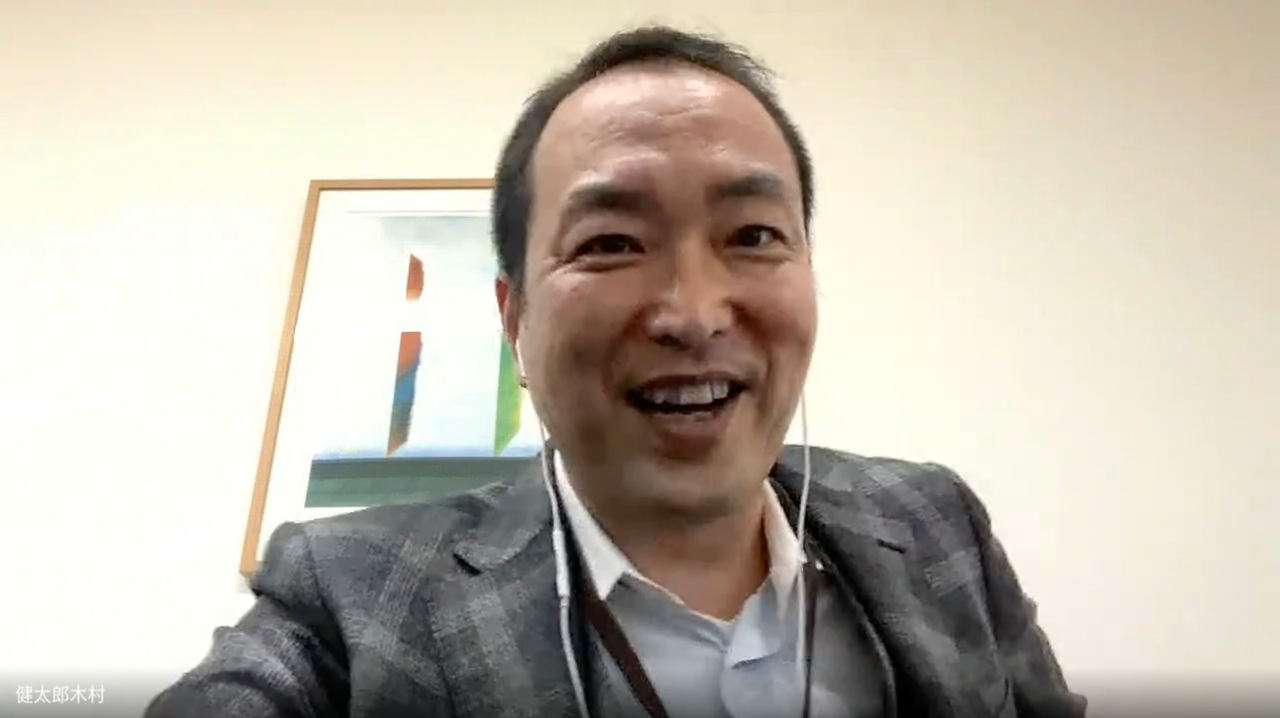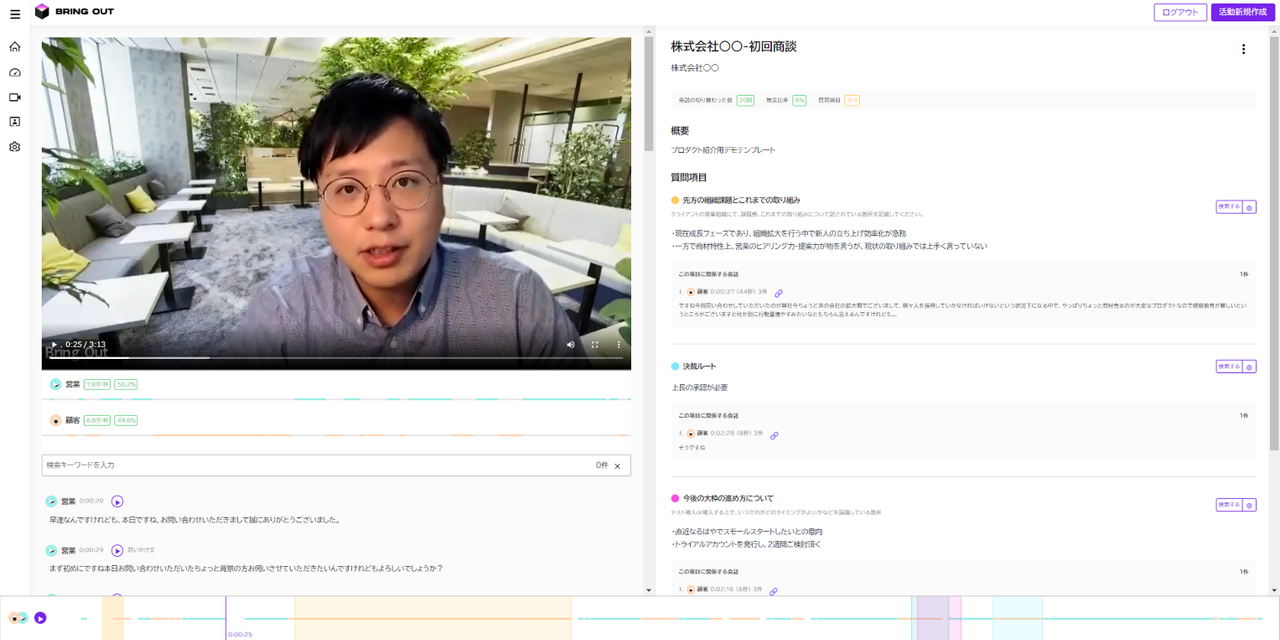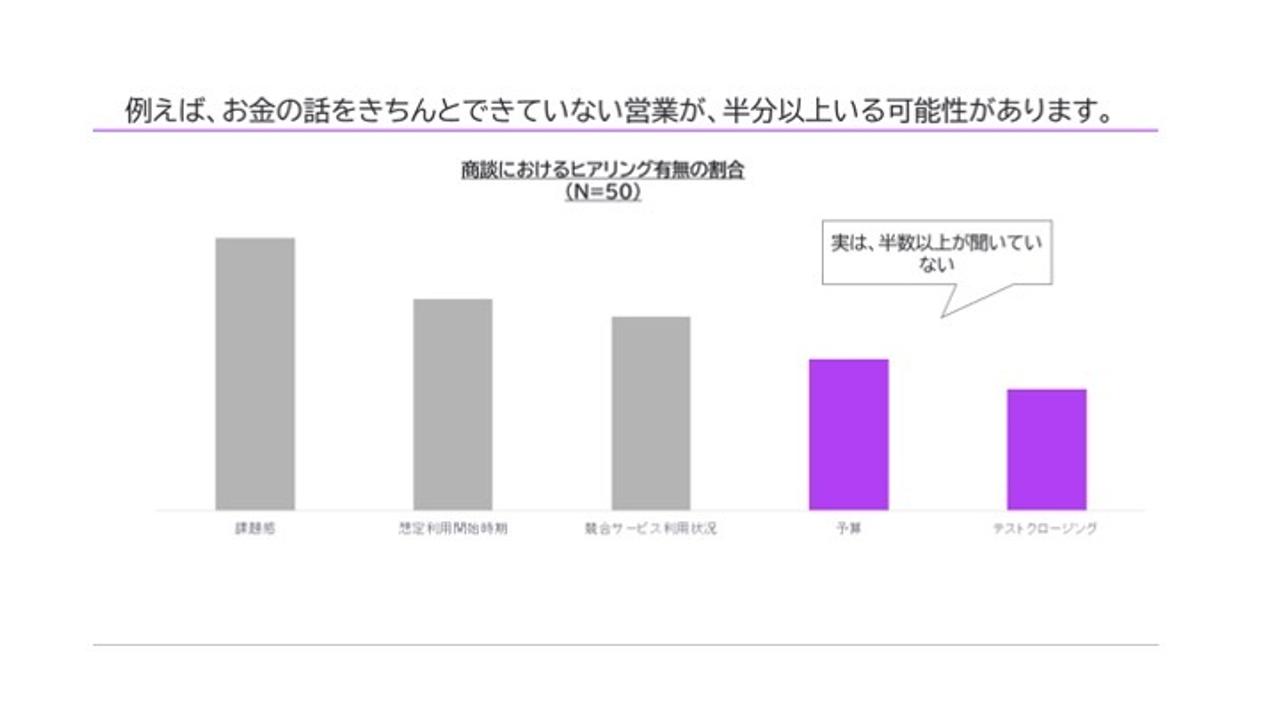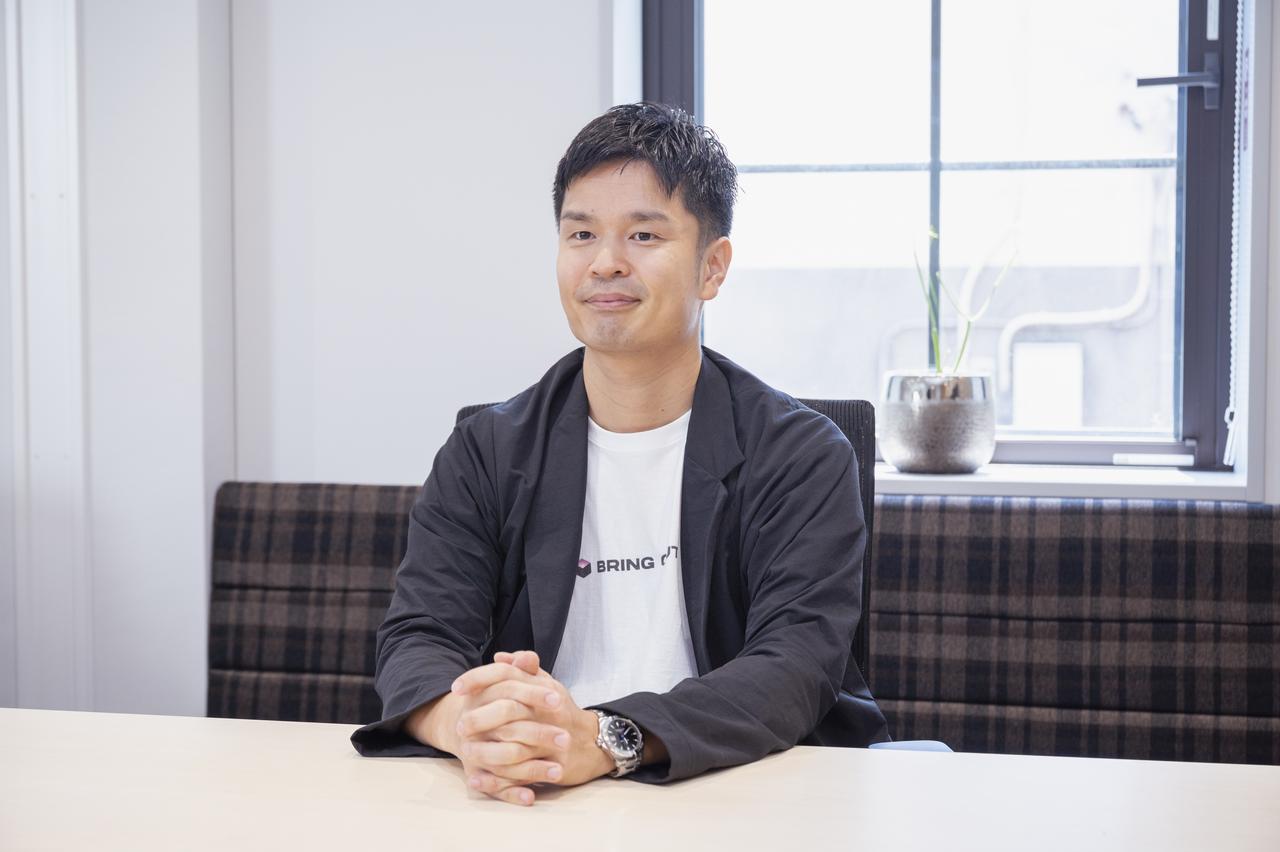Recruit’s learning app “Study Sapuri”.
“I had organized the sales process and the requirements for passing it, and I thought I was “doing the sales” properly.
Kentaro Kimura, head of the Manabi Education Support Division, who oversees Recruit’s Study Sapuri sales force, speaks about such a sad reality.
Recruit is a large company known for its strong sales force. Even though it was an incident in one division called StudySapuri, I wonder what it means that Recruit’s sales force “didn’t do what they should have done…”.
Bridging the gap between “I know” and “I can”

Many employees were “intending to do business”.
Study Sapuri, sold by Recruit, was originally developed as an online learning tool for individuals. However, over the past few years, there has been an increase in the number of schools introducing the system, and now about 40% (approximately 2,000) of the approximately 5,000 high schools nationwide have introduced the system.
However, as the business rapidly expanded, problems arose.
“In the last 6-7 years, it has become necessary (to standardize) to maintain a certain level of quality for sales and management personnel, regardless of the scale of their individual skills.” (Mr. Kimura) )
For example, in order to conduct business at a school, after interviewing the principal and managers about the school’s ideals and current issues, explain and propose areas where your company’s services can contribute. School schedules and the timing of budgeting are common to some extent at high schools across the country, so the sales process itself is relatively easy to standardize.
Just that”Sales know-how” that skillfully draws out information related to the process is highly individualized.
Even if you know what you have to do, it is difficult to actually do it well.
As the organization rapidly expands, what can be done to fill the gap between “understanding” and “can do”?
That’s when I set my sights on BringOut’s service, BringOut (still in beta version at the time), founded by Satoshi Nakano, who also worked at Recruit.
Advertisements
“Science” business talks

Kentaro Kimura from Recruit. He is the head of the Manabi Education Support Division, which leads the sales of Study Sapuri.
BringOut accurately transcribes the recorded data of business negotiations and extracts important parts that are the “keys” for advancing sales to the next step. It is possible to re-listen only the corresponding part or summarize it as a report.
To see if a sales rep is communicating well with a customer, just re-listen to all the extremes, the audio data of the deals. However, that would be extremely inefficient.
“I wanted to make it possible for people to ask only what they wanted to hear. Also, until now, we hadn’t properly analyzed aggregated business negotiation data. I thought that if I could extract it and give appropriate advice, I would be able to save time and review the organizational structure.”
Mr. Kimura talks about his aim.
According to Mr. Nakano, the accuracy of transcribing the audio data itself was relatively smooth. On top of that, the process of deciding “elements to extract” was coordinated with StudySapuri.
“Even if you extract the ‘conversation itself’ about the customer’s budget and payment with high accuracy, the judgment of whether it is good or bad will depend on the individual. In the first place, what kind of information should be extracted as ‘correct information’? We customized the AI while disassembling it.” (Mr. Nakano)
For example, at many sales sites, there is a process of confirming intentions called “test closing” in which, at the stage where customer information and service explanations have been obtained to some extent, the person in charge asks, “Do you want to introduce it?” do.
On the premise of being able to recognize the confirmation process of “Do you want to use the service?” , Mr. Kimura says that sales issues were found even in the process of reconciliation.

An image of the service screen. On the right side of the screen, elements of business negotiations are extracted.
Basically, sales people don’t want to be turned down by customers. On the other hand, it is reluctant for the customer to clearly refuse.
As a result, in response to the question “What do you think?” We had a lot of cases,” says Kimura.
Until now, sales had not been able to reflect the actual feeling of the customer side, just a zero-to-one check of “whether or not the customer has an intention to introduce the product.”
“Sometimes a business deal that seemed like a deal could suddenly turn around.That’s just the sales side thinking so, and the customer side may have had that kind of feeling from the beginning.”(Kimura-san)
Bringout and StudySapuri scrutinize the elements that should be extracted while assuming the “correct answer” that management thinks and reconciling with business negotiation data of high-performing sales personnel. I built an algorithm.
In this way, from April 2022, the business negotiation DX tool BringOut will be operated on a trial basis in the sales department of Study Sapuri. It was officially launched in July.
What is the difference between “business that can” and “business that cannot”?

As a result of extracting the items that could be heard in business negotiations, the percentage of successful budget hearings and test closings was low.
less than a year after its introduction. Mr. Kimura says that while using BringOut as a sales tool, he “became able to see the difference in performance” between what he could do and what he couldn’t do.
In the actual service, by uploading recordings of business negotiations, related conversations can be extracted when searching for a specific theme, such as “budget.” Supervisors and team leaders give advice on communication with customers based on this.
“We were able to confirm whether we were listening to the elements we needed to hear, even in situations that were different from the role-playing we had in advance. I have come to understand.” (Mr. Kimura)
The most prominent of these is the”They think they’re listening, but they’re not actually listening accurately” about the sales process and its requirements.matter. In other words, it was just a form of business. This can be a fatal injury in proceeding with negotiations.
For example, information related to orders has a direct impact on success rates.
Even if it is not directly related to orders, if you fail to hear the necessary information during communication after service introduction or at the time of introduction at the site, it will lead to lost orders and lower customer satisfaction. .

Satoshi Nakano representative of Bringout. She also uses BringOut to keep her own sales know-how updated.
All services, not limited to study supplements, do not end with the sale of products.
Mr. Nakano says that he was able to grasp the general sales methods of high performers while proceeding with various analyses.
“In many cases, salespeople who weren’t performing well answered the vague question, ‘What is your budget?’Sales representatives of high performers confirmed their intention to introduce specific plans, and asked about the budget they were using for competing services.If we can define the conditions for passing the process in a high-performer way, sales should be more efficient.” (Mr. Nakano)
Bringout hopes to improve the quality of sales in the industry as a whole by making use of the general-purpose knowledge related to sales productivity obtained through its efforts with Study Sapuri.
Of course, sales know-how such as “secret sauce” cultivated in the sales department of Study Sapuri cannot be disclosed. However, “The general framework of listening to customer needs and proposing products that serve as solutions is the same for all sales. Improving overall sales activities will lead to improvements in the industry,” says Mr. Kimura.
“By accumulating sales knowledge in the same industry, we can raise the bar. I would like to create something like a sales textbook and contribute to a worldview where everyone can improve. If we do that, we should be able to save not only sales that are not producing results, but also customers who have been associated with such sales.” (Mr. Nakano)
Turning “understanding” into a recognizable sensation

Change the process of “becoming able to do what you can’t” to something more recognizable.
In addition, in the process of precisely verbalizing sales, Mr. Kimura said that he felt the possibility of changing the process of “becoming able to do what cannot be done” into something more recognizable.
For example, the “communication skills” required for sales are generally referred to as “non-cognitive abilities.”
However, if we can extract the processes necessary for communication, just as we have extracted the know-how of “effective sales”, we should be able to think of strategies for achieving “good communication.”
“As someone who is in charge of the education business, we are thinking about how children can learn autonomously and how people can grow.
You have to match 10 like puzzle pieces, but there are times when you only have 9. In fact, it may be that the 10th one was not visible. Once we can see that, our approach should be completely different.”
Source: BusinessInsider
Emma Warren is a well-known author and market analyst who writes for 24 news breaker. She is an expert in her field and her articles provide readers with insightful and informative analysis on the latest market trends and developments. With a keen understanding of the economy and a talent for explaining complex issues in an easy-to-understand manner, Emma’s writing is a must-read for anyone interested in staying up-to-date on the latest market news.
